Like many repeat travellers to Japan, I do not always travel deep into its countryside. But on post-Covid sojourns, as overtourism has transformed hotspots like Osaka and Tokyo into crowded mazes of Instagrammers, I have felt an increasing urge to explore lesser-known regions to rediscover the tranquillity and harmony that once defined my early visits to the land of the rising sun.
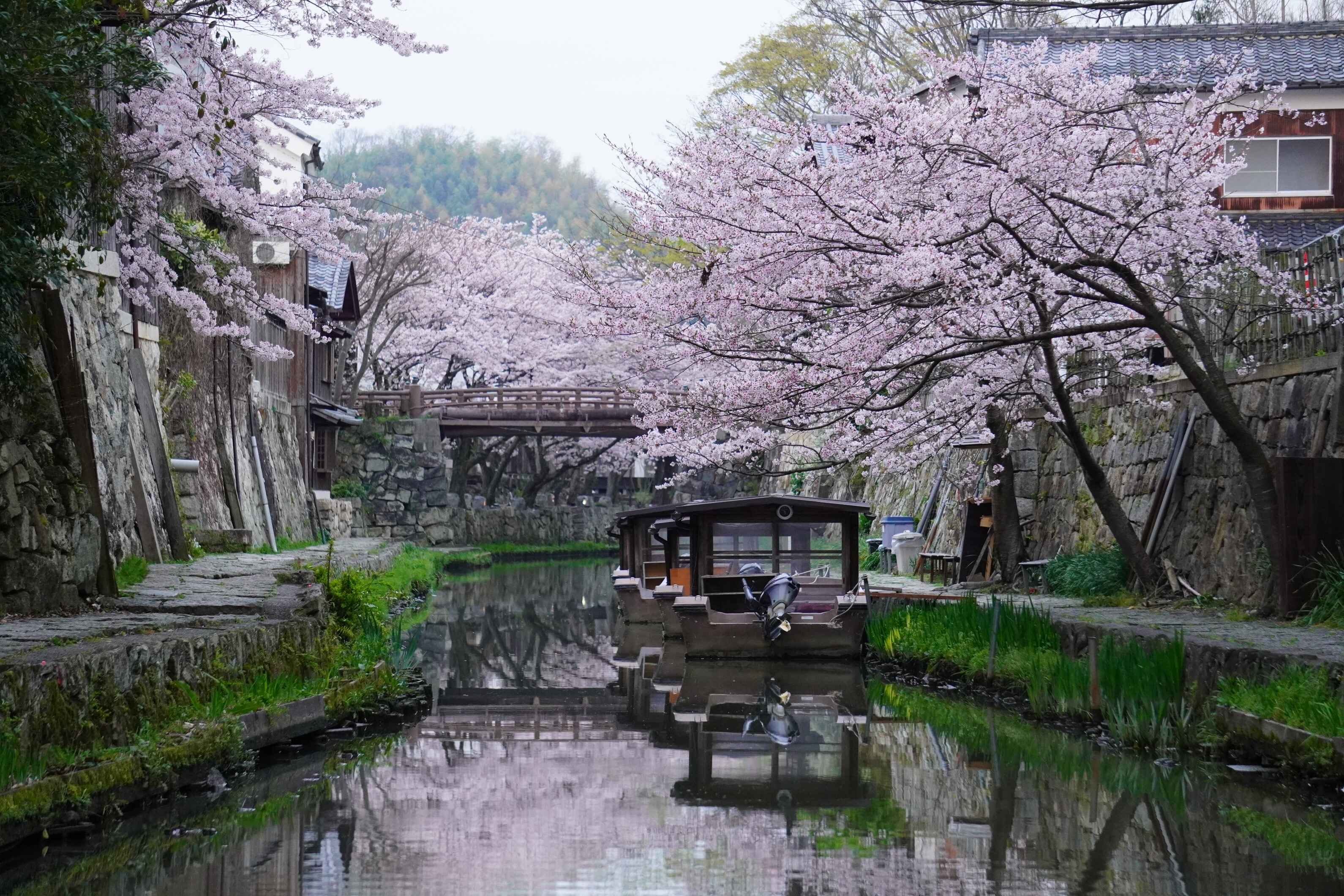 Hachiman-bori Canal
Hachiman-bori Canal
So, on a recent journey to Kyoto, I resolved to venture into quieter corners, where the soul of Japan’s rural beauty still thrives. To assist in this quest, I turned to Bear Luxe Japan, a luxury travel specialist known for curating unique and authentic experiences and stays within the country. What sets them apart is that the team can bridge the language barrier with English-speaking travellers by communicating with the properties they work with for special requests and food requirements and also assist with various arrangements for a seamless journey.
To meet my requirement of seeking a touch of zen, they recommended two independently owned ryokans, each nestled in a small town and offering a distinctive experience of Japanese hospitality and culture.
- IN THE FOOTSTEPS OF EARLY TRAVELLERS
- BREATHING NEW LIFE INTO AN OLD BUILDING
In the Footsteps of Early Travellers
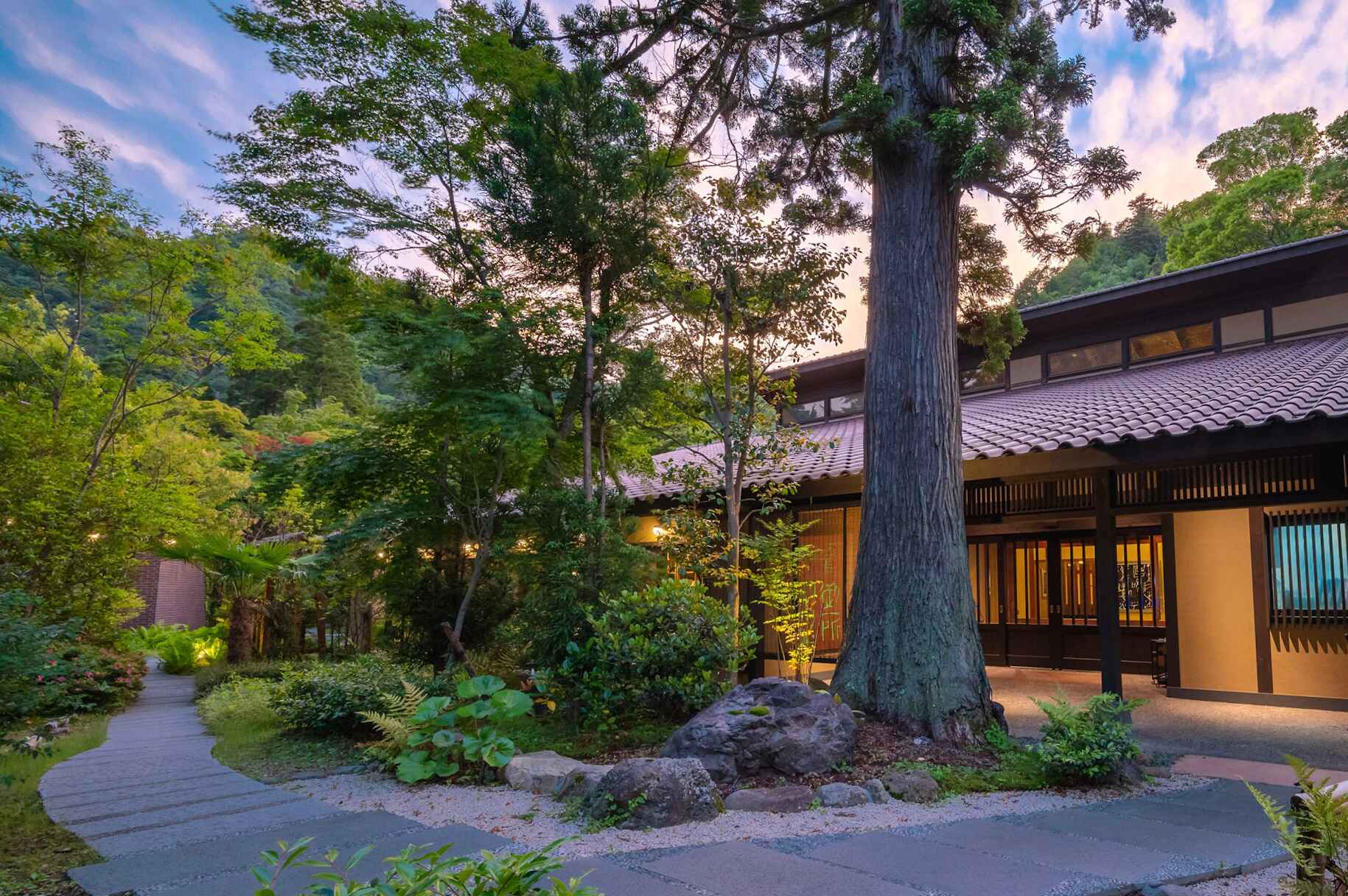 Picturesque exterior of Gosho Bessho
Picturesque exterior of Gosho Bessho
My first stop is Gosho Bessho in Arima Onsen, the oldest hot spring town in Japan that dates back to some 1,300 years ago. Located in the outskirts of Kobe, it was once upon a time patronized by emperors, samurai, and nobility for its unique “golden” springs known for their restorative, mineral-rich waters that result in a distinct coppery hue.
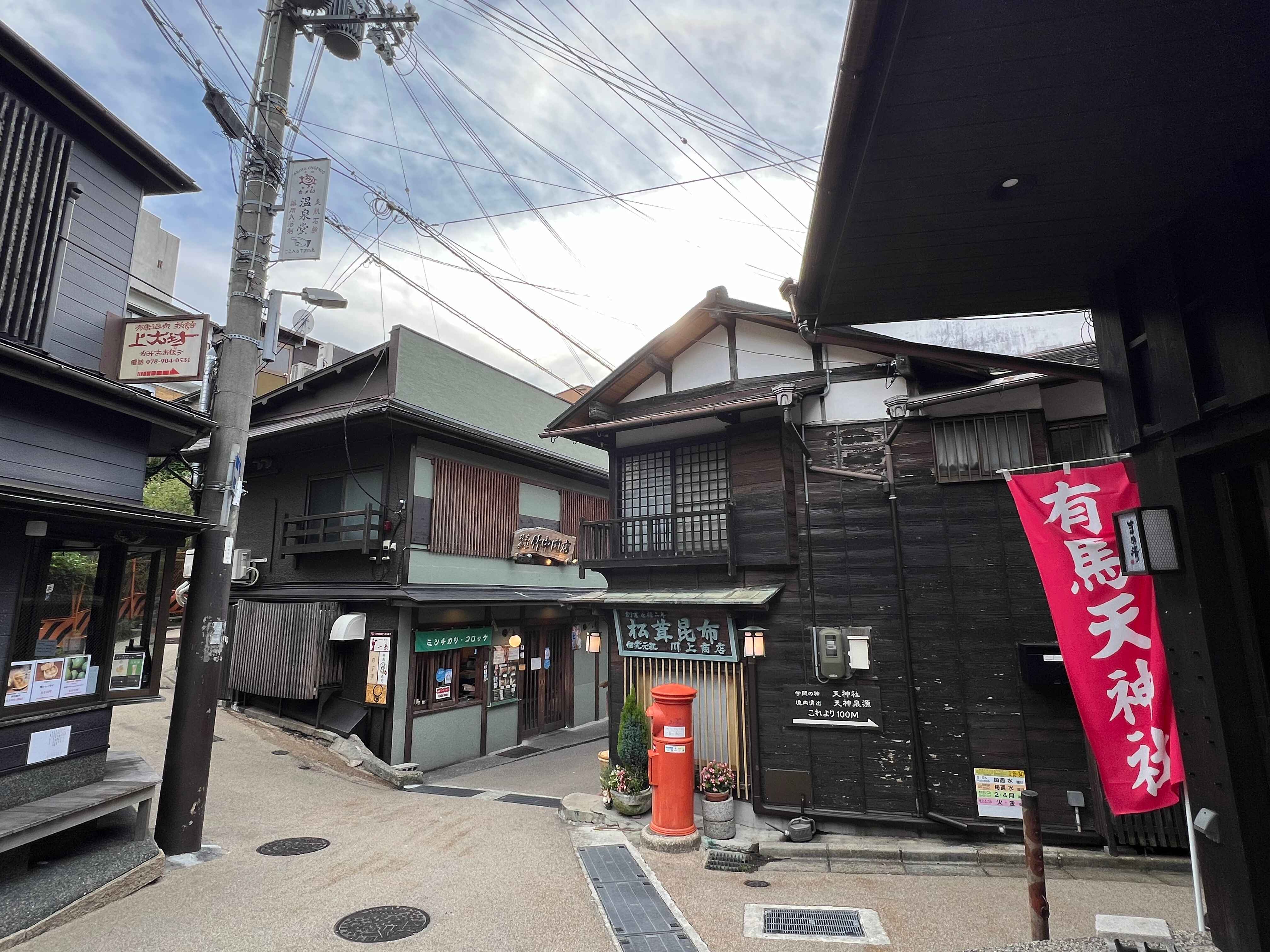 Streetview of Arima Onsen (Photo by Karen Tee)
Streetview of Arima Onsen (Photo by Karen Tee)
About 150 years ago, when the Kobe port opened to foreigners during the Meiji Restoration, Arima Onsen became one of the first destinations where travellers could meet with Japanese diplomats and dignitaries and western-style hotels and facilities began sprouting up in the town.
Today, the small town, which can be traversed from end to end in about 15 minutes by foot, offers up a slowly disappearing touch of old-world charm. Its narrow streets are lined with small eateries and traditional snack stores, like fresh soda rice crackers and fried Kobe beef and potato croquettes, while the earthy scent of the onsen at two public bathhouses set an atmospheric backdrop to a peaceful stroll.
This is also where the historic ryokan Tosen Goshobo, which has over 830 years of history still stands. My destination is its significantly newer sister property Gosho Bessho, a 10-villa ryokan situated on a sprawling 4,620sq m estate. It is run by Kazushige Kanai, the 16th generation scion of the family that started Goshobo and was launched in 2007 under the stewardship of Kanai’s father.
“I am grateful for the history of the ryokan and the town, and I would like to preserve its history and deepen the cultural value of this place so that it will endure for even more generations to come,” says Kanai.
The town’s East-meets-West leanings – the result of its historic open-door policy to foreigners – is immediately apparent in the design of Gosho Bessho. The villas are built with soaring barnhouse-inspired timber ceilings, some of them have Western-style beds instead of tatami bedrolls, and the open-concept farmhouse-style lobby is furnished with a floor to ceiling library for travellers to browse.
The food showcases an interesting blend of Japanese and European influences, as well through a meticulously prepared omakase dinner featuring seasonal local ingredients in a series of Japanese and fusion dishes. Classics like fresh sashimi and a delightful steak made with prized Tajima Kobe beef complement an Italian acqua pazza comprising fish and local vegetables poached in an herbed broth.
At the same time, it is decidedly traditional where it matters. Each villa has a private onsen bath filled with the iron and salt-rich golden water sourced directly from Arima Onsen’s hot springs. There is also a main gender-segregated bathhouse for ryokan guests who prefer the classic communal style of ablutions.
- IN THE FOOTSTEPS OF EARLY TRAVELLERS
- BREATHING NEW LIFE INTO AN OLD BUILDING
Breathing New Life Into an Old Building
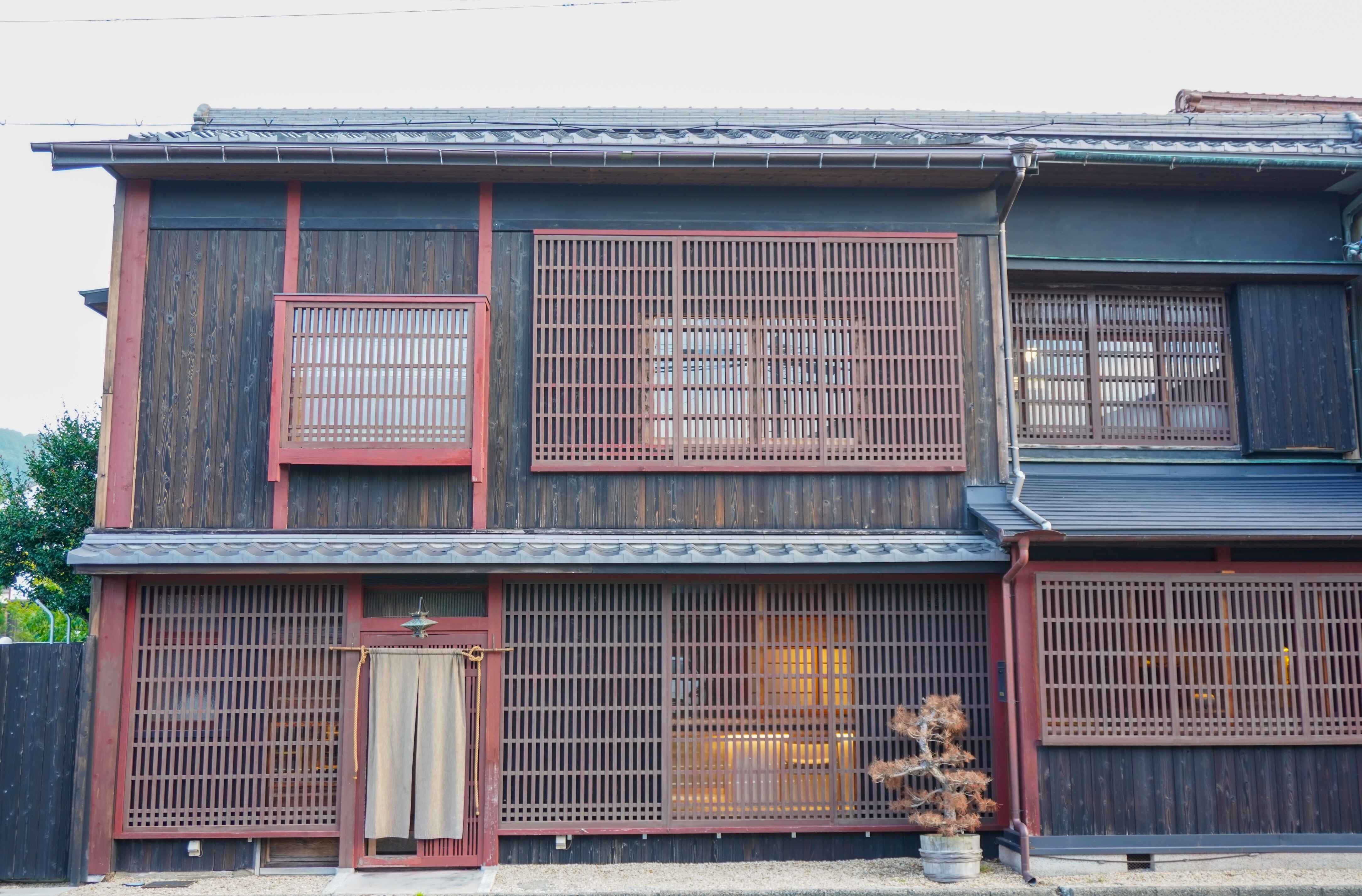 Traditional facade of Hatago Wakatsu in Omihachiman
Traditional facade of Hatago Wakatsu in Omihachiman
The next day, a seamless car transfer organized by Bear Luxe Japan brings me to Hatago Wakatsu in Omihachiman. Located in Shiga prefecture, it is about 30 minutes by train from Kyoto, making this a good side-trip from the ancient Japanese capital.
(Related: On Foot With Walk Japan)
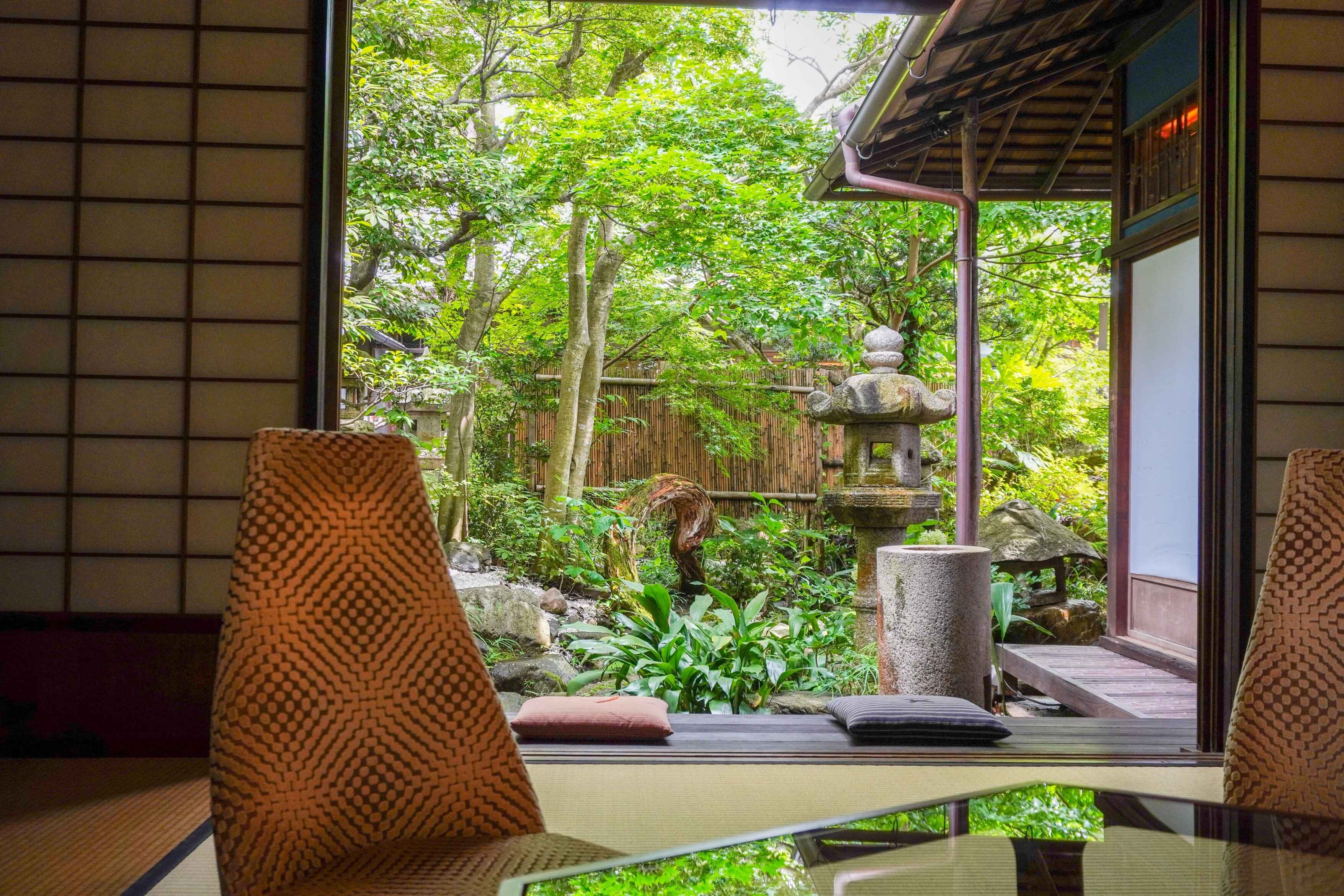 Suite at Hatago Wakatsu in Omihachiman, overlooking a Japanese garden
Suite at Hatago Wakatsu in Omihachiman, overlooking a Japanese garden
This idyllic town perched on the edge of the sacred Lake Biwa was once a thriving merchant town situated along the Nakasendo road between Tokyo and Kyoto. It is quieter these days and is most well-known for its Omihachiman Sagicho Fire Festival in mid-March, where handcrafted floats are paraded through town before they are set aflame.
Its many carefully preserved buildings from its heyday continue to offer visitors a glimpse into the life of the affluent merchant class back when it was a bustling hub.
Here along the edge of the Hachiman-bori canal, once an important transport route, is where luxury ryokan Hatago Wakatsu is located. It opened in 2020 following an extensive renovation by wedding planner turned hotelier Hisayuki Yoshida to transform a 190-year-old tatami mat shop and merchant’s residence into a stylish ryokan with just two suites.
(Related: Walking into the heart of Japan)
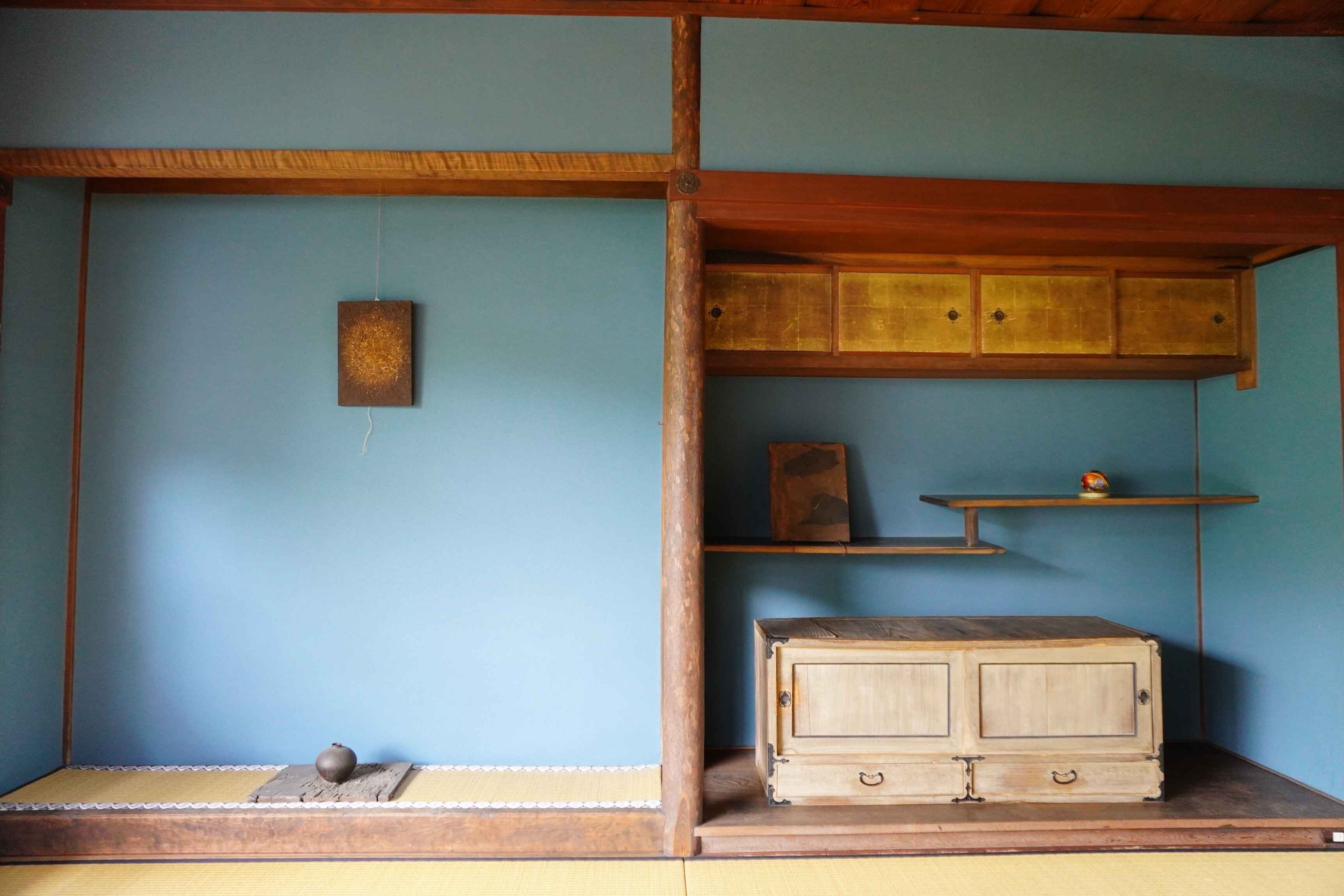 Traditional Japanese interiors at Hatago Wakatsu
Traditional Japanese interiors at Hatago Wakatsu
Inspired by the Japanese philosophy of wabi-sabi (beauty of imperfection), the carefully reimagined ryokan still retains the key elements of the sukiya-zukuri architecture that dates to the late Edo period. Interior features, like the old staircases and rafters are left untouched while old kawara clay roof tiles are repurposed as decorative elements. At the same time, newer details like the wooden sliding room partitions meticulously crafted by Yoshida’s brother harmonize with the older features seamlessly.
The two suites are designed based on different themes. The centerpiece of the stone-themed room is a stunning stone bathtub, carved out of a single boulder. Meanwhile, the more traditional tatami-mat wood-themed room opens out to a Japanese garden and comes with a hinoki bathtub.
The attention to detail is impressive – the bathroom amenities are organic, there is a complimentary bottle of locally brewed beer in the mini-fridge and not only are cotton pyjamas provided, there is also a chic cotton dress I can wear while I am out and about during my stay.
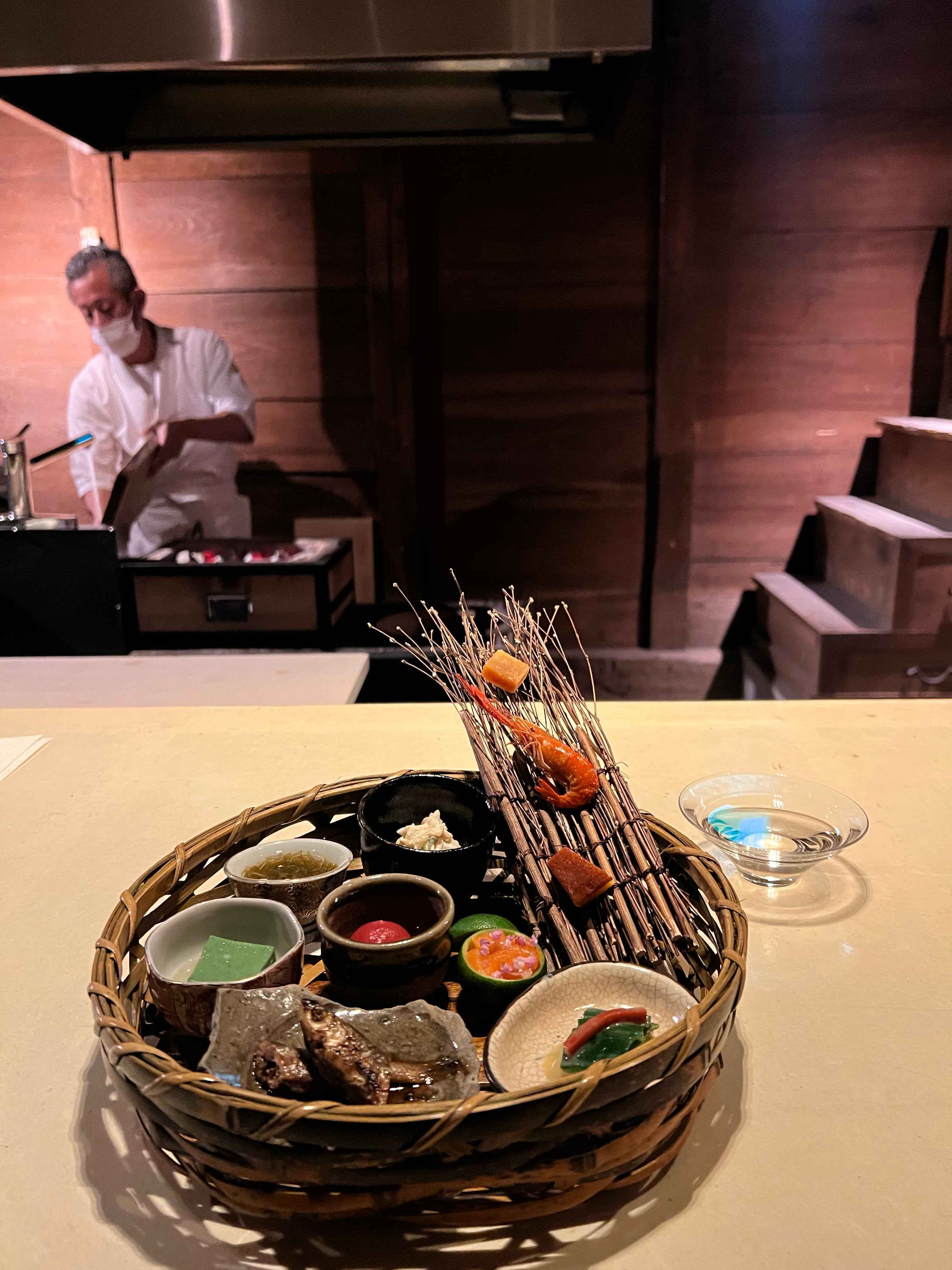 Hassun course at dinner (Photo by Karen Tee)
Hassun course at dinner (Photo by Karen Tee)
Dinner is equally elevated. The restaurant specialises in Omi kaiseki cuisine, featuring local Shiga ingredients including organic vegetables and Omi beef, ranked as Japan’s top beef alongside Kobe beef. Every course is carefully prepared and lovingly presented with quiet Japanese reverence to showcase the bounty of the land. The hassun course features a cornucopia of local delights like river shrimp and Biwa trout. Meanwhile, the Omi beef is theatrically grilled over a carefully calibrated straw fire.
In the morning, breakfast is served in a separate room overlooking the picturesque canal. We start with Asamiya green tea, a varietal brought back from China more than 1,200 years ago, and to my surprise, umeboshi, a pickled sour plum. This, I am told, is how Japanese emperors used to start their mornings to bring happiness while keeping troubles away.
I take a tentative nibble of the sour plum, wondering if it is too intense at this early hour. To my surprise, that initial tang is easily neutralized by the bitter tea, leaving a sweet aftertaste instead. Appetite whetted, I dig heartily into the rest of breakfast, satisfied and certainly, happy and at peace.
For more information on Bear Luxe Japan, click here






 Hachiman-bori Canal
Hachiman-bori Canal
 Picturesque exterior of Gosho Bessho
Picturesque exterior of Gosho Bessho
 Streetview of Arima Onsen (Photo by Karen Tee)
Streetview of Arima Onsen (Photo by Karen Tee)
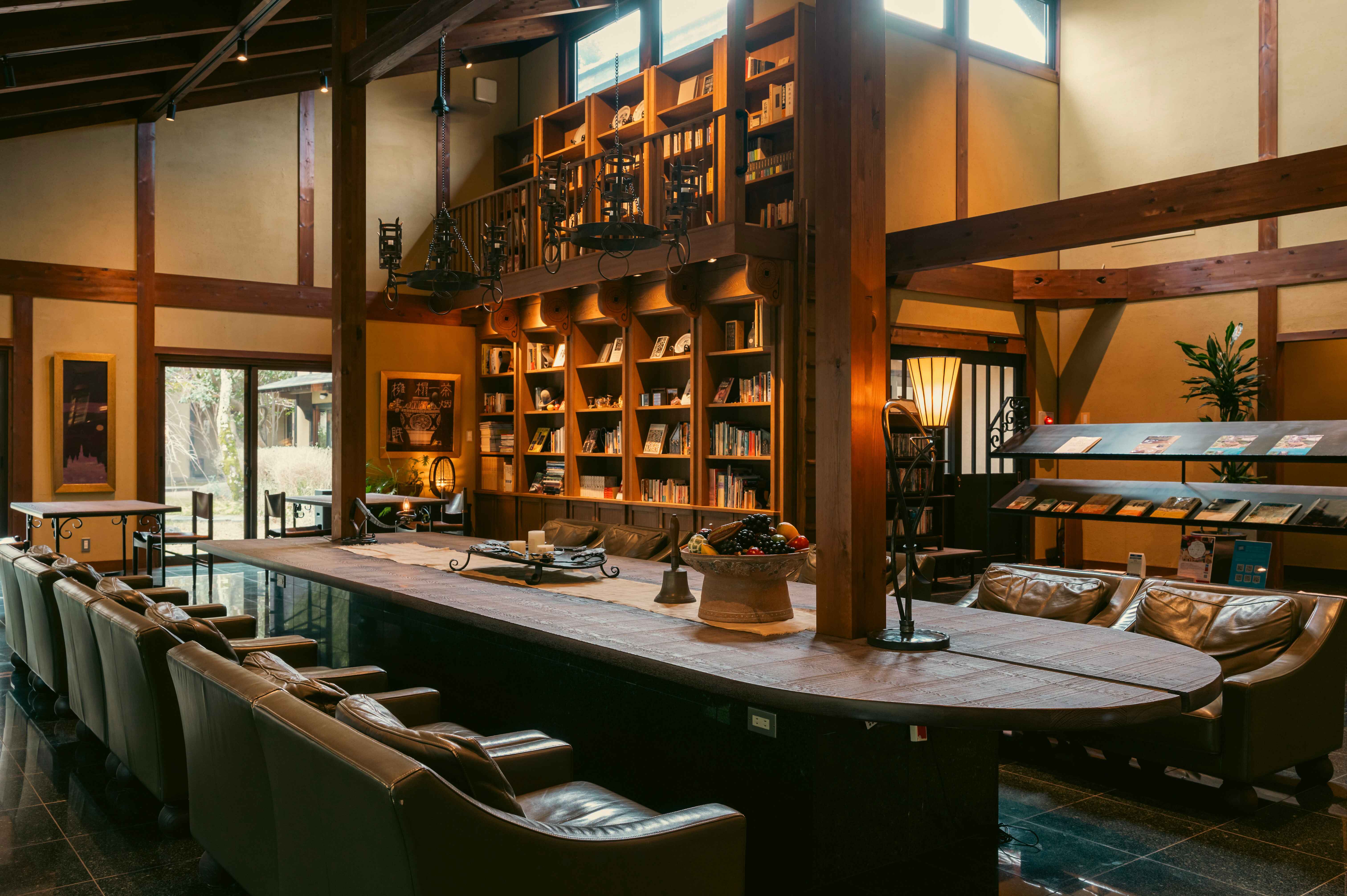
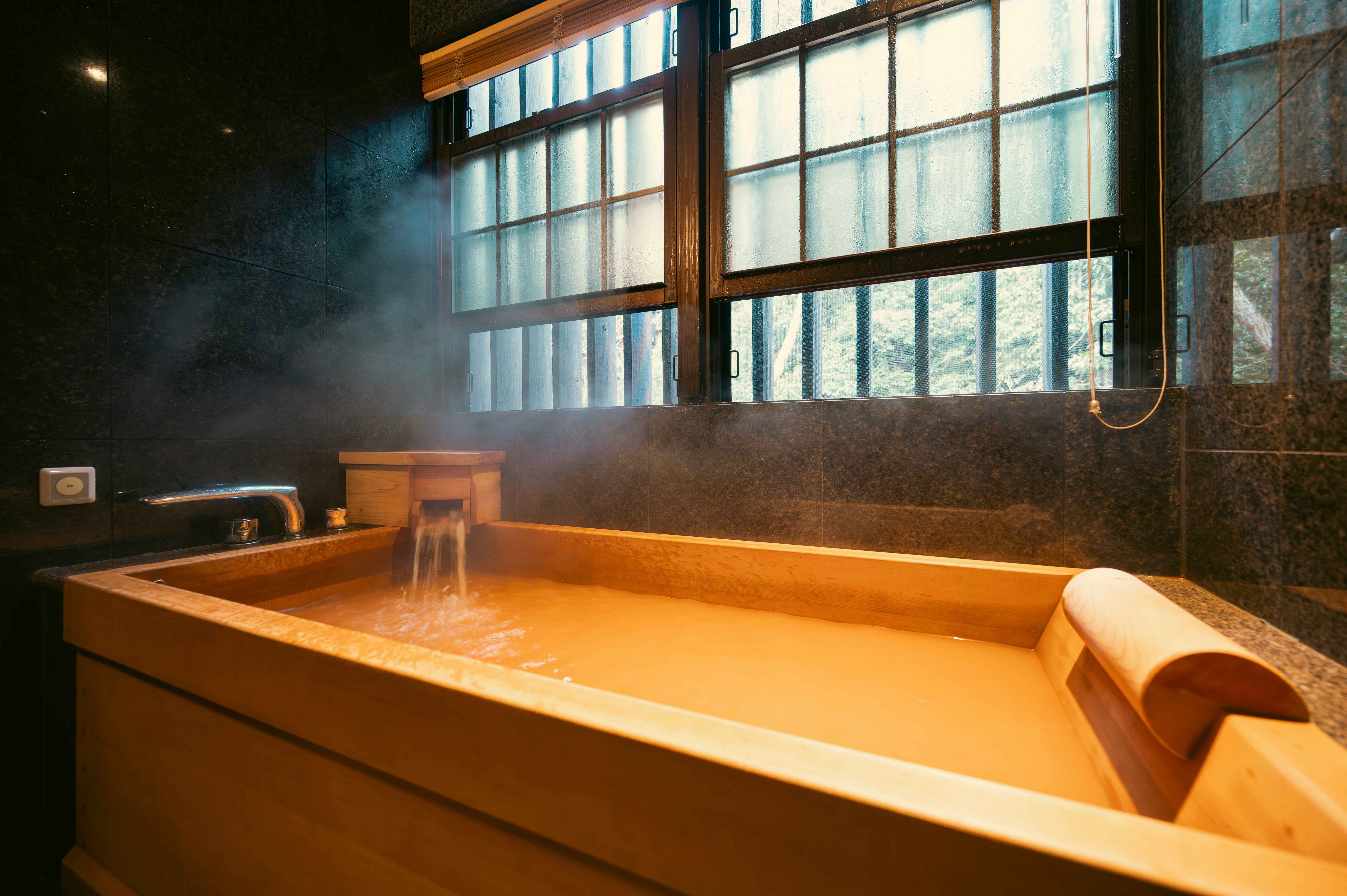
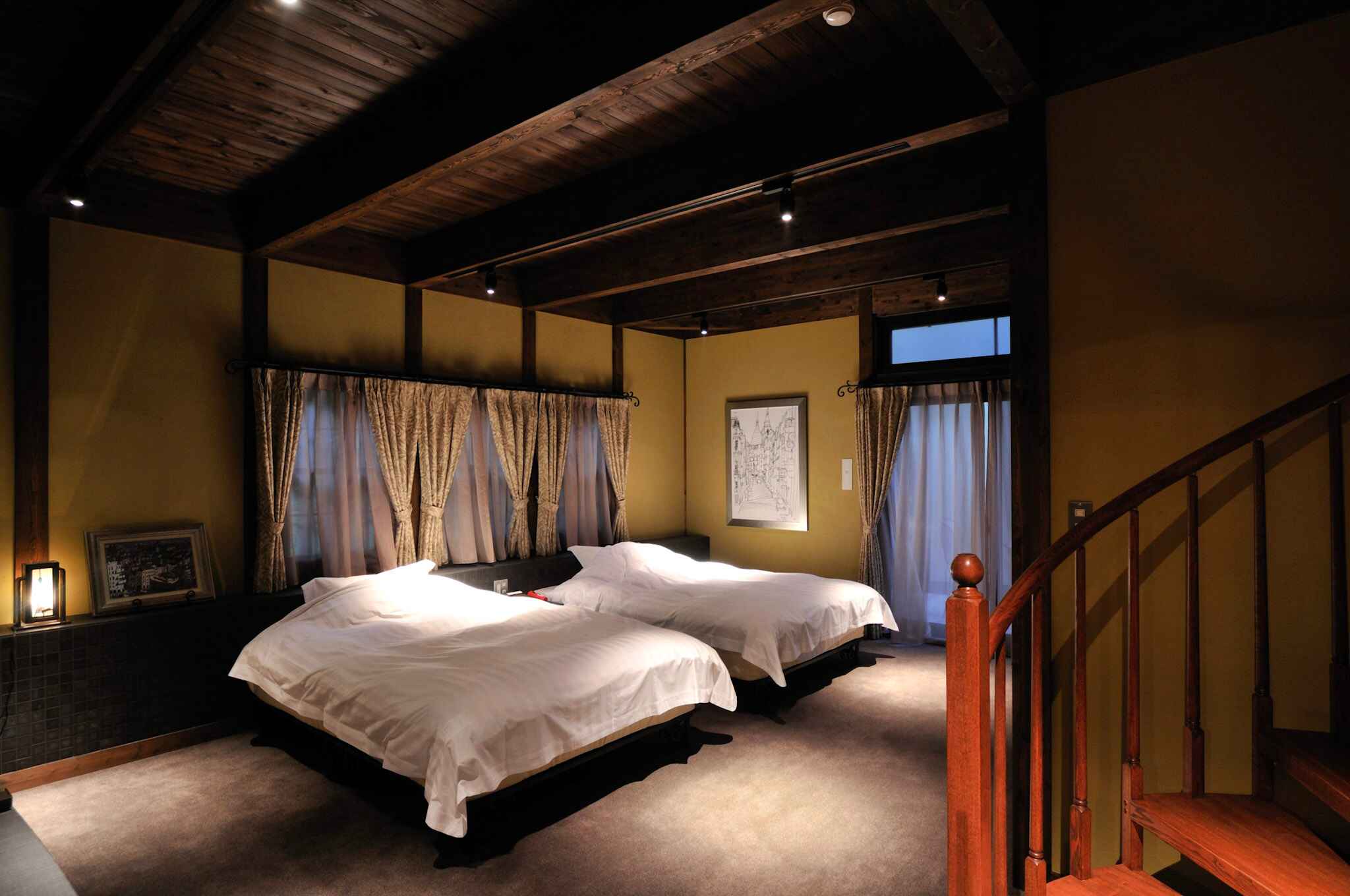

 Traditional facade of Hatago Wakatsu in Omihachiman
Traditional facade of Hatago Wakatsu in Omihachiman
 Suite at Hatago Wakatsu in Omihachiman, overlooking a Japanese garden
Suite at Hatago Wakatsu in Omihachiman, overlooking a Japanese garden
 Traditional Japanese interiors at Hatago Wakatsu
Traditional Japanese interiors at Hatago Wakatsu
 Hassun course at dinner (Photo by Karen Tee)
Hassun course at dinner (Photo by Karen Tee)




 Back
Back
